I’ve been coming to and photographing in the Alabama Hills for 20 years. I first heard about the wonders there from a friend, fellow photographer, Jan Watson. Jan had noted my fascination with rock photography and was surprised to learn that I had not ever been to nor had even heard of the Alabama Hills! She extolled the fantastic, other-worldly landscape I would find there and urged me to travel there to see these wonders for myself.
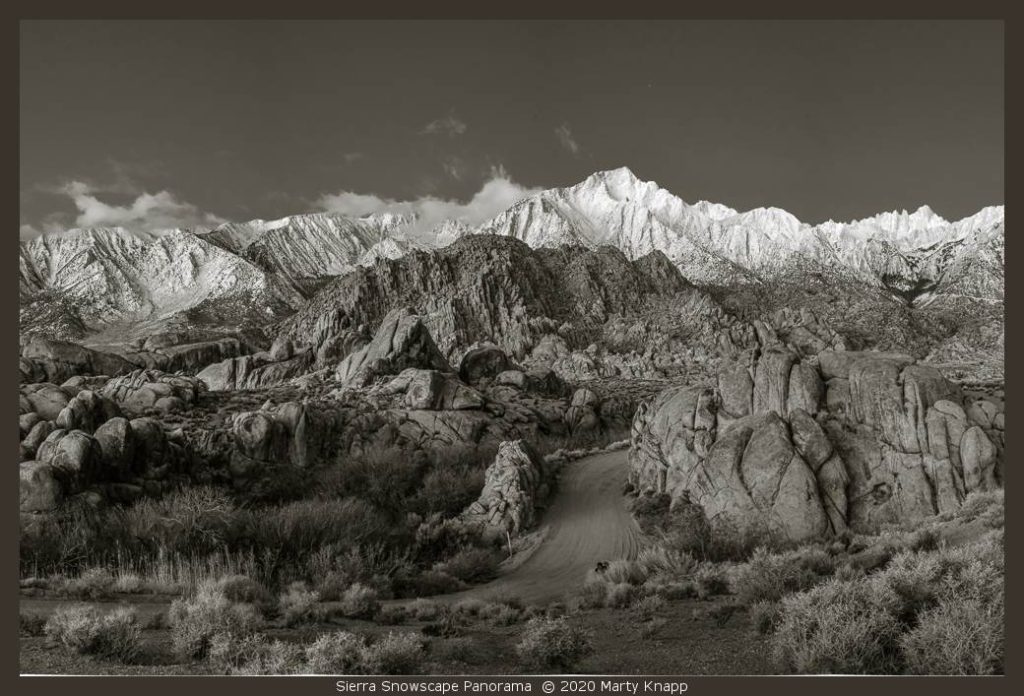
To help me visualize what I might see, Jan told me that many early TV westerns of the “Cowboys and Indians” kind, were filmed on location there. When I heard that the Lone Ranger and Hopalong Cassidy episodes were shot there, I had envisioned horsemen heroes galloping between giant boulders, the scene backdropped by majestic snow-capped mountains. No wonder, for I had been captivated by such exciting scenes as a child, dreaming in front of a small TV in my Connecticut home.

I filed Jan’s suggestion and looked forward to a time when I could visit the Alabama Hills to see the landscape there in person. In the meantime, I continued photographing the rocks and stones I found near my northern California home. For a while, I mused if some of the rocks I found were parts of long lost megalithic sites– ancient ceremonial places created by the ancients for reasons that elude us today? The stone circle on Mount Tamalpais and the stone wall up on the Pierce Point highlands are a couple of places that attracted me, but I digress….
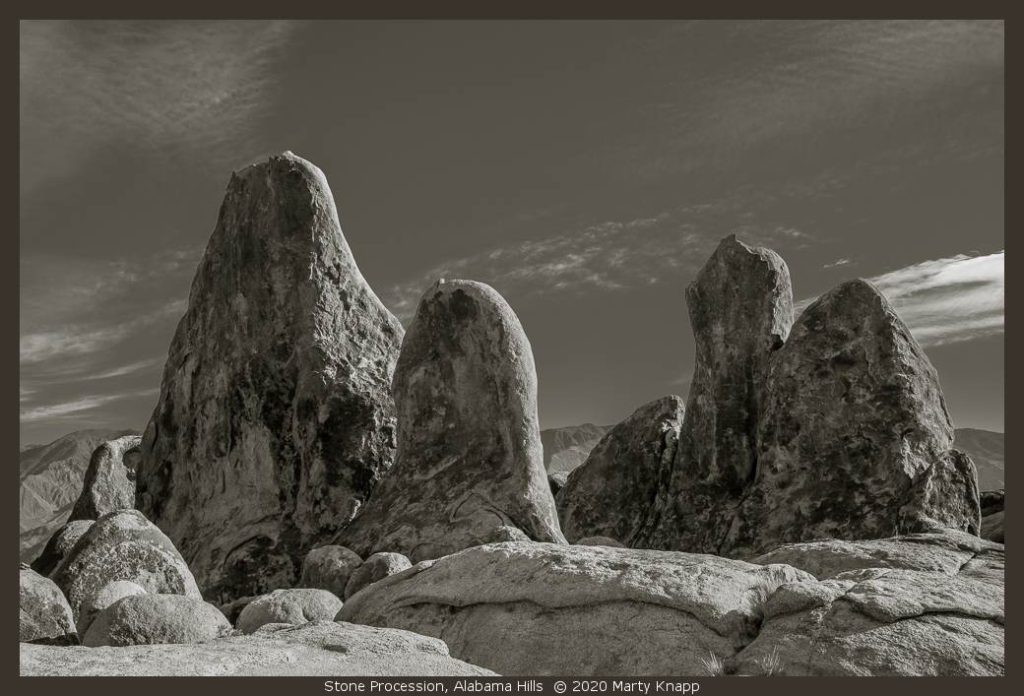
In November of 2000 I travelled with my friend, Tom Morse, to photograph the dunes at Death Valley. In Tom’s motorhome, we drove over the Sierra range down to Mono Lake and south along Hwy 395 as darkness fell. It was quite late when we drove through the small town of Lone Pine. At the only traffic signal in town, Tom turned the motorhome to the west up the Whitney Portal Road. He seemed to know what he was looking for, but said nothing. In a few miles he turned right onto a dirt road and amazingly, we soon pulled into a small canyon and prepared to turn in for the night. I had no idea of where we were. You couldn’t see anything but vague shapes under a dark sky full of stars. Tom said that at sunrise we would be treated to a splendid site. It was a kind of surprise he was giving me.
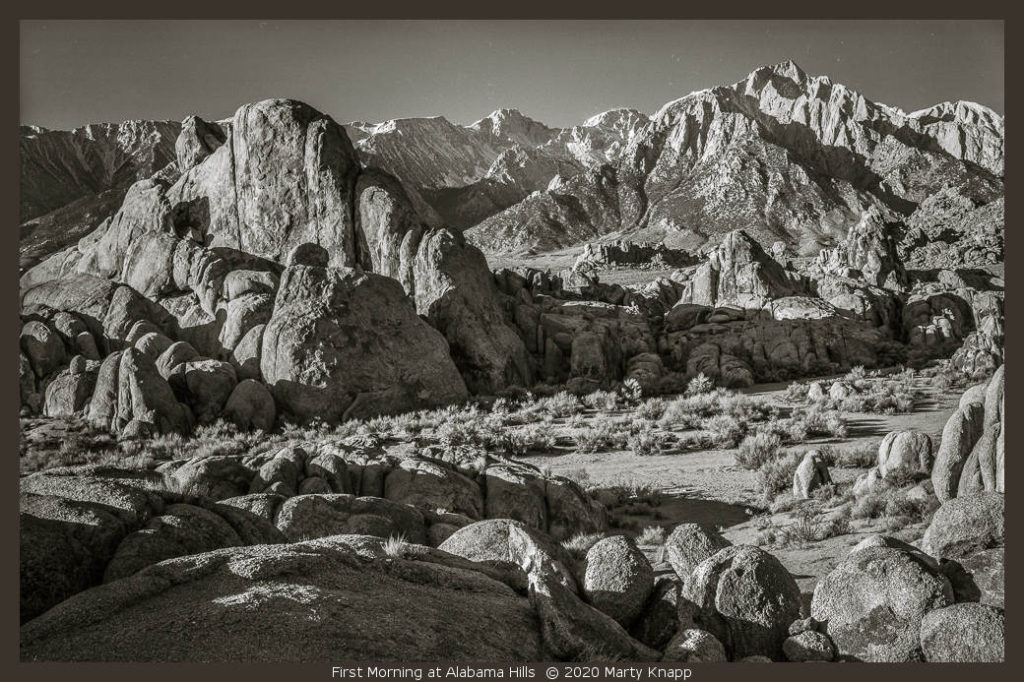
In the morning I awoke to an incredible sight. We were camped amidst a chaotic field of stones and rocks as far as the eye could see. In the distance the morning sun was lighting up the jagged eastern peaks of the Sierra mountains. On that first brief morning visit, I had not yet gotten my bearings, but I managed one photograph which I call First Morning, Alabama Hills. Later, as we pulled out to continue our journey, I vowed to return and spend time exploring and photographing this wonderland of boulders. And return I did, many times over the years. Most recently, I went there in 2018 to photograph the night sky with my friend Hadley Johnson.
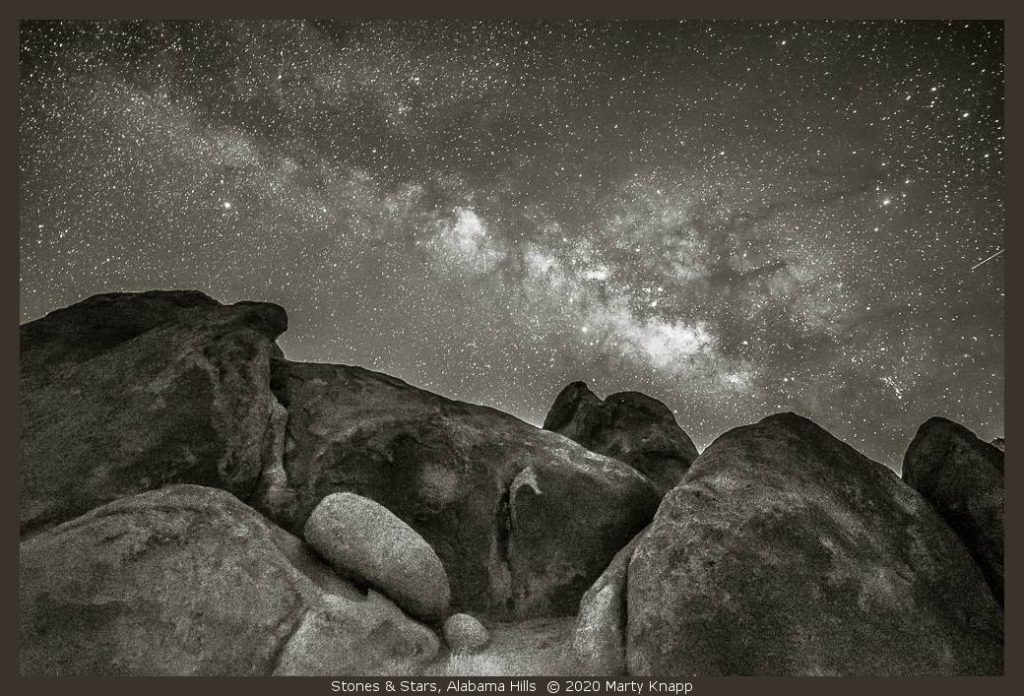
So, now, I’ve gradually created a body of work that I’ve found worthy of showing you. The photographs are parsed out into two galleries on this website:
Alabama Hills Vistas, which includes some overall views, and
Alabama Hills Stones, a collection of my favorite stone photographs made there.
I hope you enjoy the views and the stones. Your comments are welcome and will be published as I receive them.
End Piece: The Alabama Hills are not in Alabama
The story goes that the Alabama Hills were named after a Confederate warship in the Civil War by prospectors who were sympathetic to the Confederate cause. I think there may be a little more to the story. Here’s my version: As night falls in this rock-strewn landscape, some miners are sitting around a campfire. Mix in some moonshine drinking and the fading light transforming ghostly shapes on the horizon and you have the recipe for heightened imagination. As the drinking continues and the scene darkens, one of the men looks out and notices a particular rock formation that, for him, resembles the famed warship. “Hey, Boots, don’t that thar rock pile look like the Alabama?”
If I ever find that pile of rocks, I’ll photograph it and let you know!
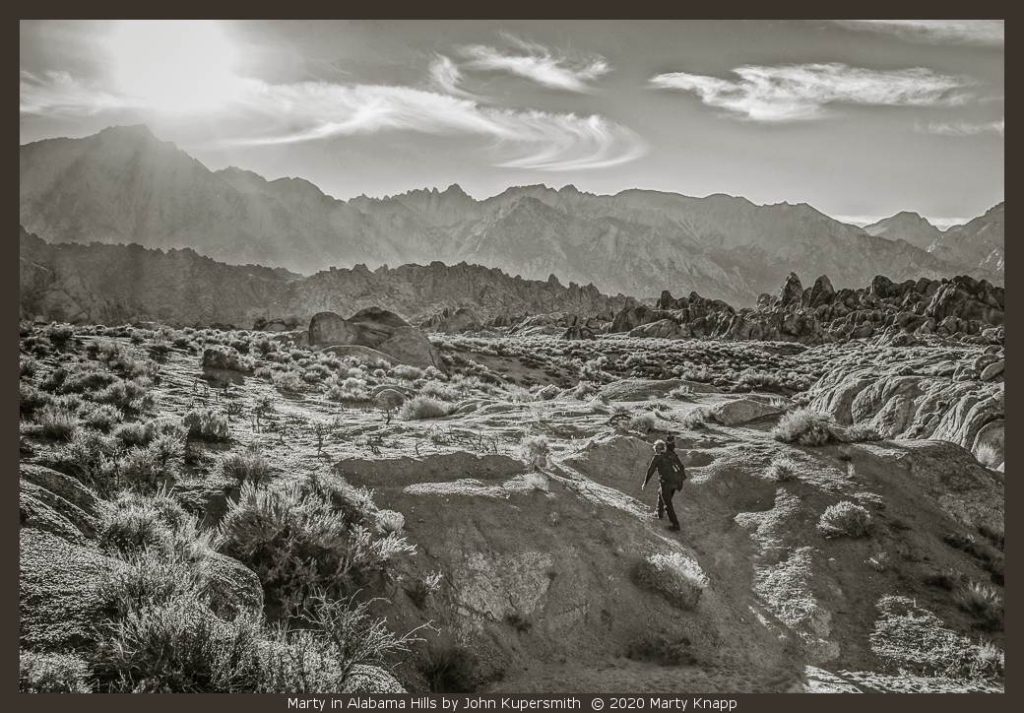
Hi Marty:
Thanks for sharing your Alabama Hills experience(s)
The Alabama Hills are also on my list of places to visit–especially for the rock art–petroglyphs, and a few pictographs. It is clearly a “first world problem” but Covid -19 has thrown a huge monkey wrench in my travel plans; maybe it will be safe to travel in 2021.
According to Mr. Google Tonto’s horse was named Scout; in early episodes, Tonto rode a white horse, named White Fellow.
I long for the “good old days”, the good guys triumphant over the “evil doers”. Instead of a “nice stiff drink” I could use an old fashioned western
as a pick-me-up.
Take care, and be well,
Brian B. Beard
Beautiful photos. Great times. We’ve got to get back there sometime soon.
You bet, Hadley. I’m looking forward to getting back there with you, too!
Love the softness of the prints. That’s a compliment not a criticism.
Michael, I take it as a compliment. The rocks are so smooth (and soft, too!)
Marty, Great images. Thanks for sharing.
Any recollection as to what film you used back then?
James-
I shot primarily Ilford FP4, sometimes HP5, always 120 roll film developed in PMK Pyro (Gordon Hutchings proprietary formula) My negs were 6×9 cm shot with a Horseman folding field camera. Thanks for asking!
Spectacular
Great memories and photos! Going back there is my post-pandemic dream.
Here! Here!
Let me know and I’ll meet you there, John.
By the time I was five years — in my Alexandria, Virginia, childhood — my internal alarm clock was permanently set for 5:30 on Saturday evening. My mother knew to not let me miss an episode of the Lone Ranger. I vowed that some day I would visit the magical setting where Kemosabe and Tonto and Silver (and what was Tonto’s horse named?) rode like thunder from one entrancing weekly glory to another. Now, at 68, living in Oakland, and having driven the East side of the Sierra many times, never knowing how close I was, I renew my vow. And this time I believe I can actually pull it off, once you-know-what goes back to wherever the eff it came from! Thank you for all of this staggering beauty and wonder, Marty!
Brad,
thanks for the memories. I was a little older back then as I’m now 73. Still can’t remember the name of Tonto’s horse, either.
When we get back there to LP we can go to the museum and look it up!
I did some research before coming on a trip west in 2018. Nevertheless, the reality was far better than the dry research. I arrived in the evening after a long, rainy drive up from San Diego through rush hour L.A. traffic. The rain, however, had coated the April mountains in snow and left the Hills dark and moody. The next dawn was a totally different story with orange sandstone, white-capped peaks, crystal blue sky to the west and a rainbow of colors to the east. I’ve driven through it many times but fell in love with the Eastern Sierra on that trip. I’ll be back also.
These are great photos of the AH!
Marty B
Thanks, Marty!